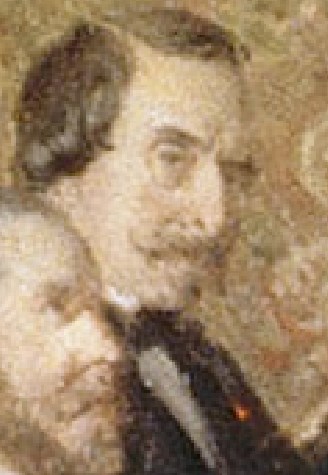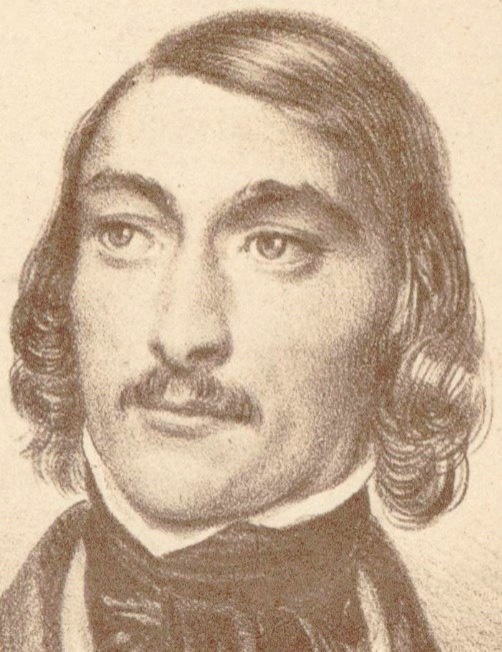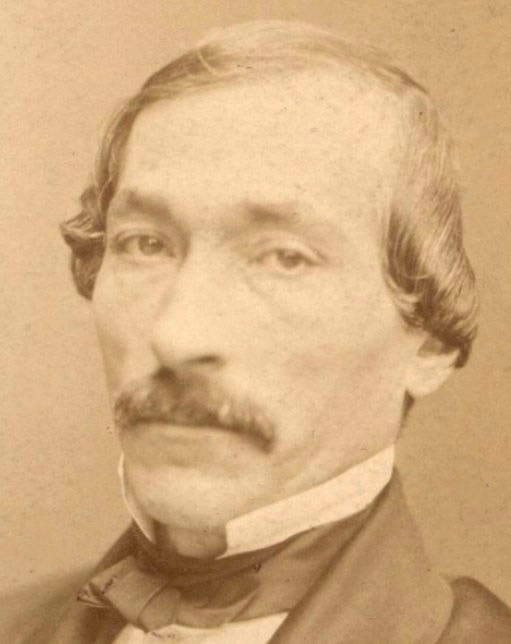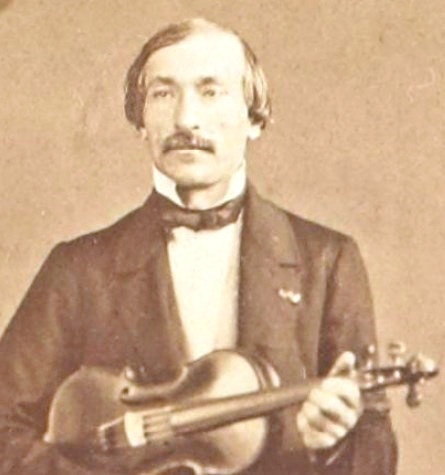Jean-Delphin Alard (1815-1888), Violinist, composer, professor
1st image: Soirée; 2nd:gravure by Marchant (1842); 3rd: by Nadar (1860); 4th: photo by Moulin (1860s).
Eminent violinist Jean-Delphin Alard performed at several vendredi-soirées at the Louvre—most notably on December 17, 1852, when he supported (in the presence of e.g. Meyerbeer76 and Bizet) his students in their performance alongside Pasdeloup12 and presented his own composition for two violins.
Although no contemporary press accounts confirm his inclusion here, the resemblance is remarkable, warranting his presence in this overview. The appearance of two violins in the artwork —one held by violinist/conductor Girard23, the other resting on a chair near Halévy19—further suggests his participation. His Légion d’Honneur boutonnière is yet another supporting detail.
A prodigious musician, Alard joined the orchestra in his hometown of Bayonne at the age of eight. By twelve, he was studying under Habeneck at the Paris Conservatoire. When Paganini heard him play in 1831, he reportedly remarked, “If all students play like him, then how shall the masters play?”
Yet, despite his extraordinary talent, Alard remained modest and unassuming, dedicating himself primarily to teaching rather than the spotlight of concert performances.
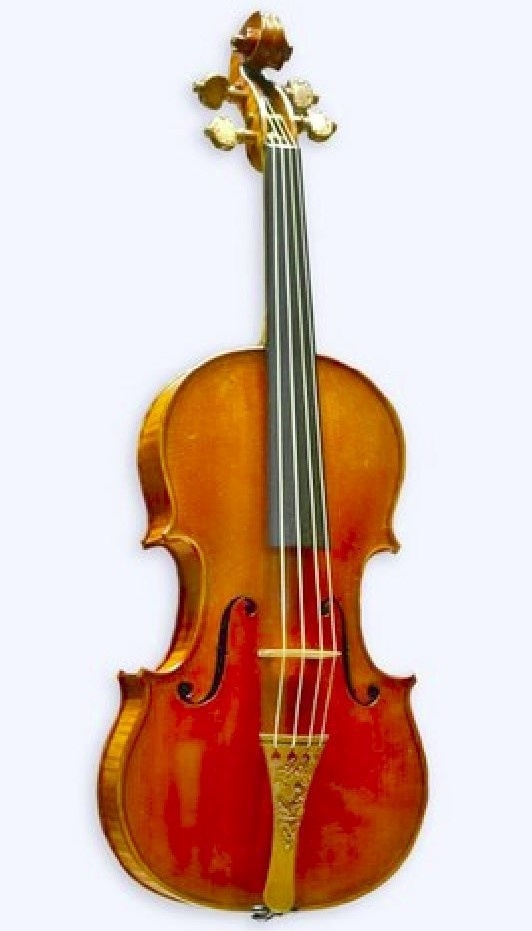
Appointed professor at the Conservatoire in 1843, he soon married the daughter of Jean-Baptiste Vuillaume —France’s greatest violin maker and collector.
Known for his pure and expressive playing, characterized by minimal vibrato, Alard composed violin concertos for solo and duo performances, quartets, études, fantasies, and even a symphony (1855). His enduring legacy, however, lies in his violin teaching methods, which seamlessly blended classical techniques with the groundbreaking innovations introduced by Paganini. Following the death of his father-in-law in 1875, Alard inherited Vuillaume’s magnificent violin collection.
A year after Alard’s own passing, his daughters donated his prized del Gesù violin —crafted by Guarneri in 1742— to the Conservatoire. Yet this was only one among several exceptional instruments he owned, including an Amati violin from 1649 and two Stradivari violins dating to 1715 and 1728.
It was Alard who famously coined the nickname of the world’s most valuable violin in Vuillaume’s collection, the Stradivari Messiah which marked its 300th anniversary in 2016. This legendary instrument has been played by only a handful of masters, among them Alard’s distinguished pupil, Pablo de Sarasate.
Note: The hairstyle depicted in Soirée au Louvre closely resembles the engraved portrait of Alard held in the BnF archives as a signed copy. This suggests that either Alard altered his hairstyle in the late 1850s, or Biard based his rendering on a reversed newspaper engraving—a common practice at the time (see de Nieuwerkerke, for instance). Unfortunately, no caricature by Giraud exists to verify either possibility.
